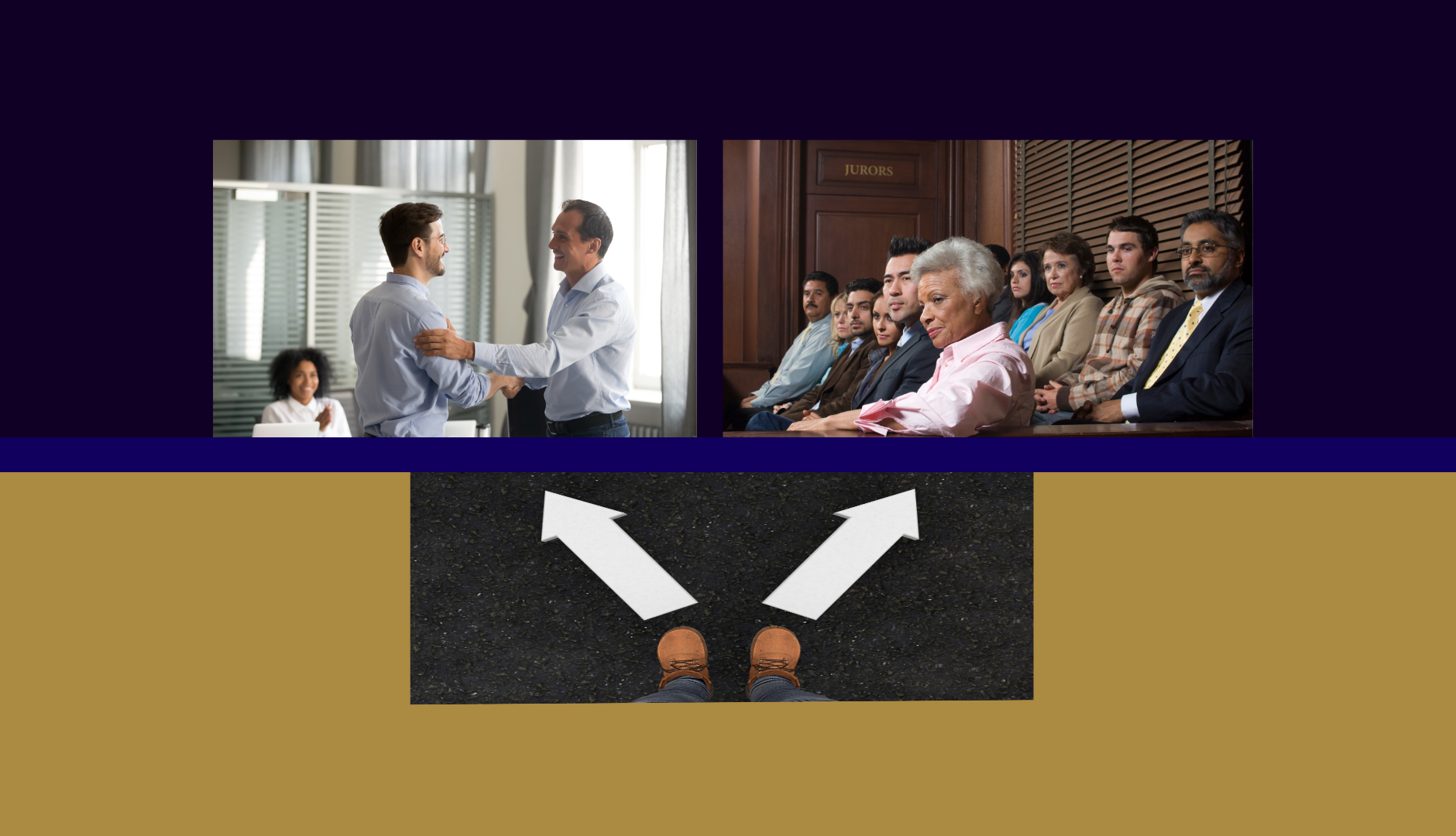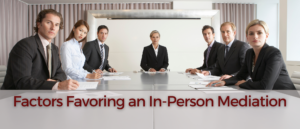
The Role of Ambivalence in Mediation
“Your ‘if’ is the only peacemaker; much virtue in ‘if’.” ~Shakespeare (As You Like It)
I recently listened to an episode of the Human Brain podcast entitled “The Benefits of Mixed Emotions” in which Shankar Vedantam talked with Psychologist Naomi Rothman about how feelings of ambivalence help negotiators reach better decisions. It made me think about how the seemingly paradoxical phrases “it depends” and “what if” relate to dispute resolution via litigation and mediation, or courtroom and conference room, decision-making.
The phrases represent a dichotomy between the decision-making prospects inherent in litigated versus mediated dispute resolution processes. “It depends” describes what can happen in a courtroom, while “what if” describes what can happen in a conference room. Interestingly, however, Rothman’s research seems to indicate that the uncertainty of an “it depends” outcome might actually improve outcomes negotiated through the lens of “what if” thinking.
Rothman’s studies indicate that having mixed feelings – aka ambivalence – in the decision-making process can help a person make better decisions. Feeling emotional ambivalence, she says, makes a person more “cognitively flexible” because the mind is processing a situation that feels complicated, which can be uncomfortable. The discomfort slows down the decision-making process, stimulates a desire for more information, tampers impulsive reactions, and inspires better outcomes. Having ambivalence, it seems, helps to prioritize accuracy over decisiveness, which makes a person more open and receptive to third-party advice, reduces emotionally triggered cognitive bias, and leads to more accurate thinking.

Mediation’s Place in Decision-Making
As a mediator, I can’t help but think about Rothman’s research in the context of negotiations between litigants. Experienced litigators often exchange settlement offers before engaging in formal mediation without much success and begin the mediation process expressing doubt about the prospects of a resolution. Often, however, even those mediations end in a negotiated settlement. But, why?
Perhaps Rothman’s studies offer an explanation. In the podcast, she mentions two variables that impact how difficult decisions can be made better. The first is the environment. The second is the presence of an ambivalent negotiator.
The environment. Rothman says the first step to taking advantage of ambivalence in negotiations is establishing a cooperative environment. This first step may be difficult to replicate between parties and their advocates outside of mediation. One can hardly imagine a more highly competitive environment than litigation, or more focused personalities than litigators. Indeed, ambivalence is not a trait associated with zealous courtroom advocates, where disputing parties ask strangers to choose between bilateral options to decide who wins and who loses. Nor are litigants generally comfortable showing ambivalence to an adversary after months (sometimes years) of time and resources have been expended in fighting.
In litigation, where the prospect of trial and waiver arguments are present, Rothman’s advice to be strategic about showing ambivalence resonates. Indeed, as Rothman’s studies reveal, a person who shares ambivalence in a highly competitive environment – like litigation – risks being taken advantage of.
But, even during litigation there is at least one day in which ambivalence is seen less as a sign of weakness, and instead as a sign of a good faith negotiator – the day of mediation. During a mediation session, parties and their counsel often appear in a neutral location (or online) and take a figurative time-out from fighting. To encourage candor and objective reality-checking, the Texas Legislature has adopted rules to preclude the use of what happens in mediation against a party. Viewed from this perspective, Rothman’s research suggests mediation as an optimal environment through which the benefits of ambivalence can become possible for negotiations between litigating parties.
Ambivalent negotiator. Rothman says her studies show that an ambivalent person in a negotiation can impact how people around them process information and think. Instead of a bilateral approach to winning and losing, she says that a negotiator who demonstrates an interest in winning, but not at the expense of another, invites a willingness by others to consider more information, inspiring a collective willingness to search for a better outcome for all.
While Rothman’s studies suggest the kind of ambivalence found in the actual decision-makers themselves, in the competitive arena of litigation, where stakes can be high, an ambivalent mediator can set the stage for productive negotiations. Indeed, mediators trained in negotiation strategies and litigation tactics often intuitively express ambivalence, thereby offering a level of trust and rapport that is hard to replicate between disputing parties and capable litigators, whose duty and training inspire zealous advocacy.
In sum, what Rothman discusses in the podcast proffers plausible insight as to why mediated negotiations can be more successful than non-mediated negotiations between entrenched litigants. Perhaps one reason mediation works is because it combines a new environment and ambivalent negotiator with litigants facing difficult options. On the one hand, the parties know that resolution depends on the prospects of who a judge or jury believes. But on the other, they know that mediation provides a chance to control how the dispute resolves if a settlement can be reached.
Felicia Harris Hoss
is an attorney-mediator, arbitrator, and early dispute resolution (EDR) neutral, with more than 20 years of legal experience. Through the years, Felicia has helped parties resolve disputes both inside and outside of the courtroom in a wide range of industries involving a broad spectrum of claims. Felicia is available to assist parties and their counsel through online, hybrid, and in-person mediations, arbitrations, and EDR processes.




